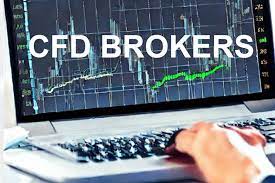Risk management is an integral aspect of successful trading, and in the realm of Contracts for Difference (CFD), mastering the art of risk management is paramount. CFD trading offers opportunities for profit, but it also carries inherent risks due to the use of leverage. In this article, we delve into the principles and strategies that constitute the art of risk management in cfd trading.
**1. Set Clear Risk Parameters:**
Before entering a CFD trade, establish clear risk parameters. Define the maximum amount of capital you are willing to risk on a single trade and set appropriate stop-loss orders. These parameters should align with your overall risk tolerance and trading objectives.
**2. Utilize Stop-Loss Orders:**
Stop-loss orders are a fundamental tool in risk management. Set stop-loss levels based on technical analysis, support and resistance levels, or your predetermined risk tolerance. Stop-loss orders help limit potential losses by automatically closing a position when the market moves against your expectations.
**3. Determine Risk-Reward Ratios:**
Establishing a risk-reward ratio is crucial for maintaining a balanced approach to trading. For every trade, define the potential reward you aim to achieve relative to the risk you are willing to take. A common rule of thumb is to aim for a risk-reward ratio of at least 1:2, ensuring that potential profits outweigh potential losses.
**4. Avoid Overleveraging:**
While leverage in CFD trading can amplify profits, it also magnifies the risk of significant losses. Avoid overleveraging by using a conservative amount of leverage. Consider the impact of leverage on your overall portfolio and be mindful of the potential consequences of higher leverage levels.
**5. Diversify Your Portfolio:**
Diversification is a key strategy for risk management. Instead of concentrating your investments in a single asset or market, spread your capital across different asset classes, industries, or geographical regions. Diversification helps mitigate the impact of poor-performing assets on your overall portfolio.
**6. Regularly Review and Adjust:**
Market conditions and dynamics change over time. Regularly review and adjust your risk management strategies based on your trading performance, market trends, and any changes in your financial situation. Being adaptive allows you to refine your approach in response to evolving market conditions.
**7. Stay Informed about Market Events:**
Market events, economic indicators, and geopolitical developments can significantly impact CFD markets. Stay informed and be aware of scheduled events that may affect the assets you are trading. Consider adjusting your risk management strategies ahead of potentially volatile periods.
**8. Embrace a Disciplined Trading Plan:**
A disciplined trading plan is the backbone of effective risk management. Clearly outline your trading goals, strategies, risk parameters, and contingency plans. Stick to your plan consistently, avoiding impulsive decisions driven by emotions or short-term market fluctuations.
**9. Be Mindful of External Factors:**
External factors, such as sudden market news or unexpected events, can influence CFD prices. Be mindful of these factors and consider their potential impact on your trades. Having a contingency plan for unforeseen events is an integral part of comprehensive risk management.
**10. Continuously Monitor and Learn:**
Risk management is an ongoing process. Continuously monitor your trades, evaluate your risk management strategies, and learn from both successes and setbacks. Being proactive in refining your risk management approach contributes to your growth as a proficient CFD trader.
In conclusion, mastering the art of risk management in CFD trading requires a combination of discipline, strategic planning, and adaptability. By implementing these principles, traders can navigate the dynamic and potentially volatile CFD markets with resilience, protect their capital, and increase the likelihood of sustained success in this exciting and challenging arena.

